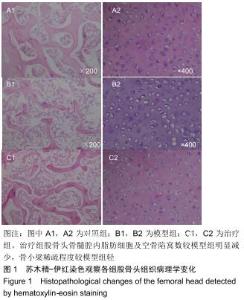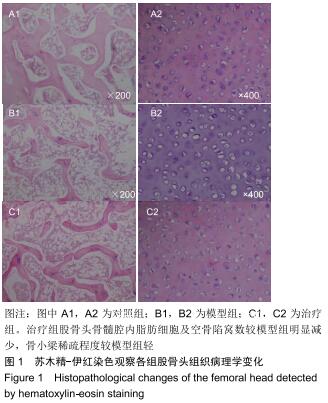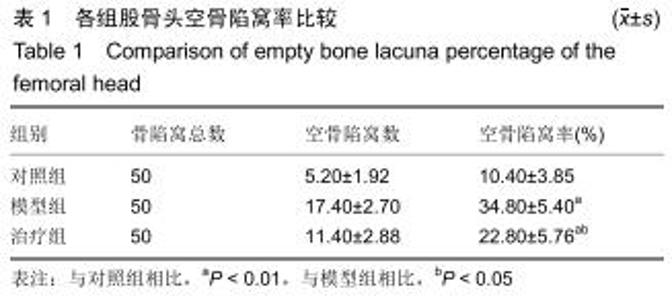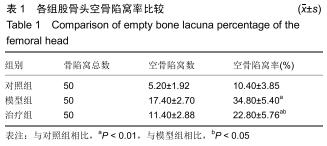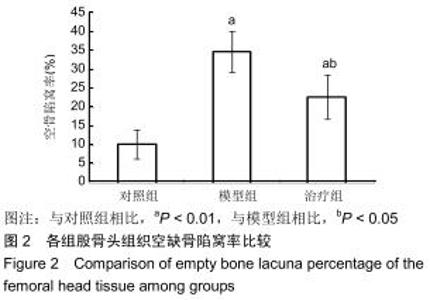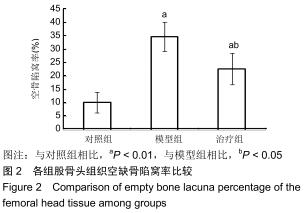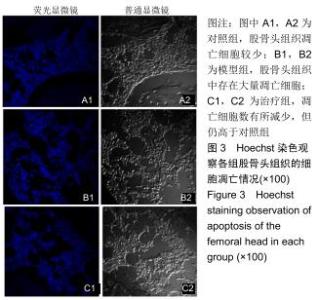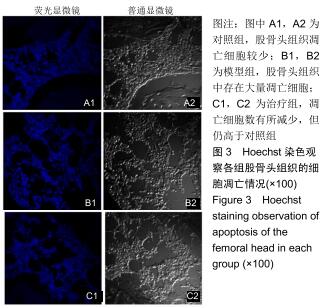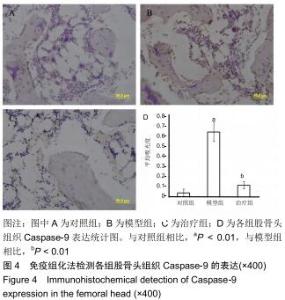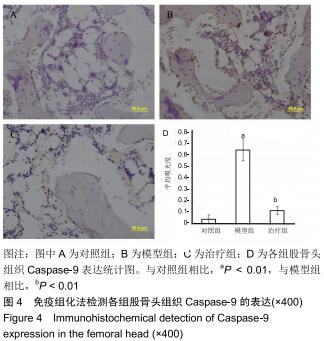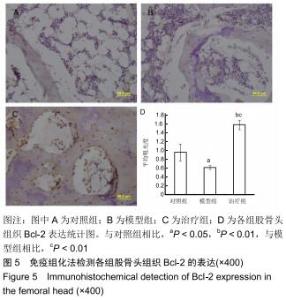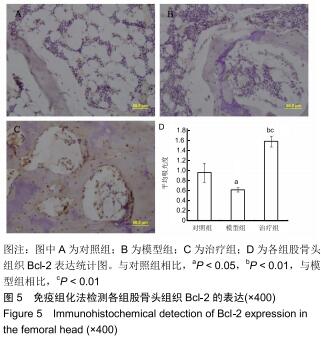|
[1] DRESCHER W, SCHLIEPER G, FLOEGE J, et al. Steroid-related osteonecrosis--an update. Nephrol Dial Transplant. 2011;26(9): 2728-2731.
[2] HWANG Y, PARK J, CHOI SH, et al. Traumatic and Non-traumatic Osteonecrosis in the Femoral Head of a Rabbit Model. Lab Anim Res. 2011;27(2):127-131.
[3] HU X, GUO Z, XU J, et al. Role of feline sarcoma‑related protein in the viability and apoptosis of bladder cancer cells. Mol Med Rep. 2019;19(6): 5219-5226.
[4] HUANG J, DING Z, LUO Q, et al. Cancer cell-derived exosomes promote cell proliferation and inhibit cell apoptosis of both normal lung fibroblasts and non-small cell lung cancer cell through delivering alpha-smooth muscle actin. Am J Transl Res. 2019;11(3):1711-1723.
[5] CAO M, ZHANG Z, HAN S, et al. Butyrate inhibits the proliferation and induces the apoptosis of colorectal cancer HCT116 cells via the deactivation of mTOR/S6K1 signaling mediated partly by SIRT1 downregulation. Mol Med Rep. 2019;19(5):3941-3947.
[6] KYLLI P, NOHYNEK L, PUUPPONEN-PIMIÄ R, et al. Lingonberry (Vaccinium vitis-idaea) and European cranberry (Vaccinium microcarpon) proanthocyanidins: isolation, identification, and bioactivities. J Agric Food Chem. 2011;59(7):3373-3384.
[7] 范明远,叶青.体内自由基清除剂及抗氧化剂—原花青素的研究进展[J].中国预防医学杂志2001,12(4):303-305.
[8] ZHANG Z, ZHENG L, ZHAO Z, et al. Grape seed proanthocyanidins inhibit H2O2-induced osteoblastic MC3T3-E1 cell apoptosis via ameliorating H2O2-induced mitochondrial dysfunction. J Toxicol Sci. 2014;39(5):803-813.
[9] ZHAO ZQ, BAI R, LIU WL, et al. Roles of oxidative DNA damage of bone marrow hematopoietic cells in steroid-induced avascular necrosis of femoral head. Genet Mol Res. 2016;15(1):15017706.
[10] PAPAVASILIOU AV, TRIANTAFYLLOPOULOS I, PAXINOS O, et al. The role of cell therapies and hip arthroscopy in the management of osteonecrosis: an update. J Hip Preserv Surg. 2018;5(3):202-208.
[11] MCAVOY S, BAKER KS, MULROONEY D, et al. Corticosteroid dose as a risk factor for avascular necrosis of the bone after hematopoietic cell transplantation. Biol Blood Marrow Transplant. 2010;16(9):1231-1236.
[12] YAMAMOTO T, SCHNEIDER R, IWAMOTO Y, et al. Rapid destruction of the femoral head after a single intraarticular injection of corticosteroid into the hip joint. J Rheumatol. 2006;33(8):1701-1704.
[13] WEINSTEIN RS, JILKA RL, PARFITT AM, et al. Inhibition of osteoblastogenesis and promotion of apoptosis of osteoblasts and osteocytes by glucocorticoids. Potential mechanisms of their deleterious effects on bone. J Clin Invest. 1998;102(2):274-282.
[14] O'BRIEN CA, JIA D, PLOTKIN LI, et al. Glucocorticoids act directly on osteoblasts and osteocytes to induce their apoptosis and reduce bone formation and strength. Endocrinology. 2004;145(4):1835-1841.
[15] KERACHIAN MA, HARVEY EJ, COURNOYER D, et al. A rat model of early stage osteonecrosis induced by glucocorticoids. J Orthop Surg Res. 2011;6:62.
[16] WEINSTEIN RS, WAN C, LIU Q, et al. Endogenous glucocorticoids decrease skeletal angiogenesis, vascularity, hydration, and strength in aged mice. Aging Cell. 2010;9(2):147-161.
[17] KERACHIAN MA, SÉGUIN C, HARVEY EJ. Glucocorticoids in osteonecrosis of the femoral head: a new understanding of the mechanisms of action. J Steroid Biochem Mol Biol. 2009;114(3-5): 121-128.
[18] WEINSTEIN RS, NICHOLAS RW, MANOLAGAS SC. Apoptosis of osteocytes in glucocorticoid-induced osteonecrosis of the hip. J Clin Endocrinol Metab. 2000;85(8):2907-2912.
[19] KABATA T, KUBO T, MATSUMOTO T, et al. Apoptotic cell death in steroid induced osteonecrosis: an experimental study in rabbits. J Rheumatol. 2000;27(9):2166-2171.
[20] NIE Z, CHEN S, PENG H. Glucocorticoid induces osteonecrosis of the femoral head in rats through GSK3β-mediated osteoblast apoptosis. Biochem Biophys Res Commun. 2019;511(3):693-699.
[21] CHEN Y, DOU C, YI J, et al. Inhibitory effect of vanillin on RANKL-induced osteoclast formation and function through activating mitochondrial-dependent apoptosis signaling pathway. Life Sci. 2018; 208:305-314.
[22] JIN YR, STOHN JP, WANG Q, et al. Inhibition of osteoclast differentiation and collagen antibody-induced arthritis by CTHRC1. Bone. 2017;97: 153-167.
[23] CONAWAY HH, HENNING P, LIE A, et al. Activation of dimeric glucocorticoid receptors in osteoclast progenitors potentiates RANKL induced mature osteoclast bone resorbing activity. Bone. 2016;93:43-54.
[24] LAI R, XIAN D, XIONG X, et al. Proanthocyanidins: novel treatment for psoriasis that reduces oxidative stress and modulates Th17 and Treg cells. Redox Rep. 2018;23(1):130-135.
[25] ZHAO YM, GAO LP, ZHANG HL, et al. Grape seed proanthocyanidin extract prevents DDP-induced testicular toxicity in rats. Food Funct. 2014;5(3):605-611.
[26] YANG D, LI S, GAO L, et al. Dietary grape seed procyanidin extract protects against lead-induced heart injury in rats involving endoplasmic reticulum stress inhibition and AKT activation. J Nutr Biochem. 2018;62: 43-49.
[27] NIU Q, HE P, XU S, et al. Fluoride-induced iron overload contributes to hepatic oxidative damage in mouse and the protective role of Grape seed proanthocyanidin extract. J Toxicol Sci. 2018;43(5):311-319.
|
